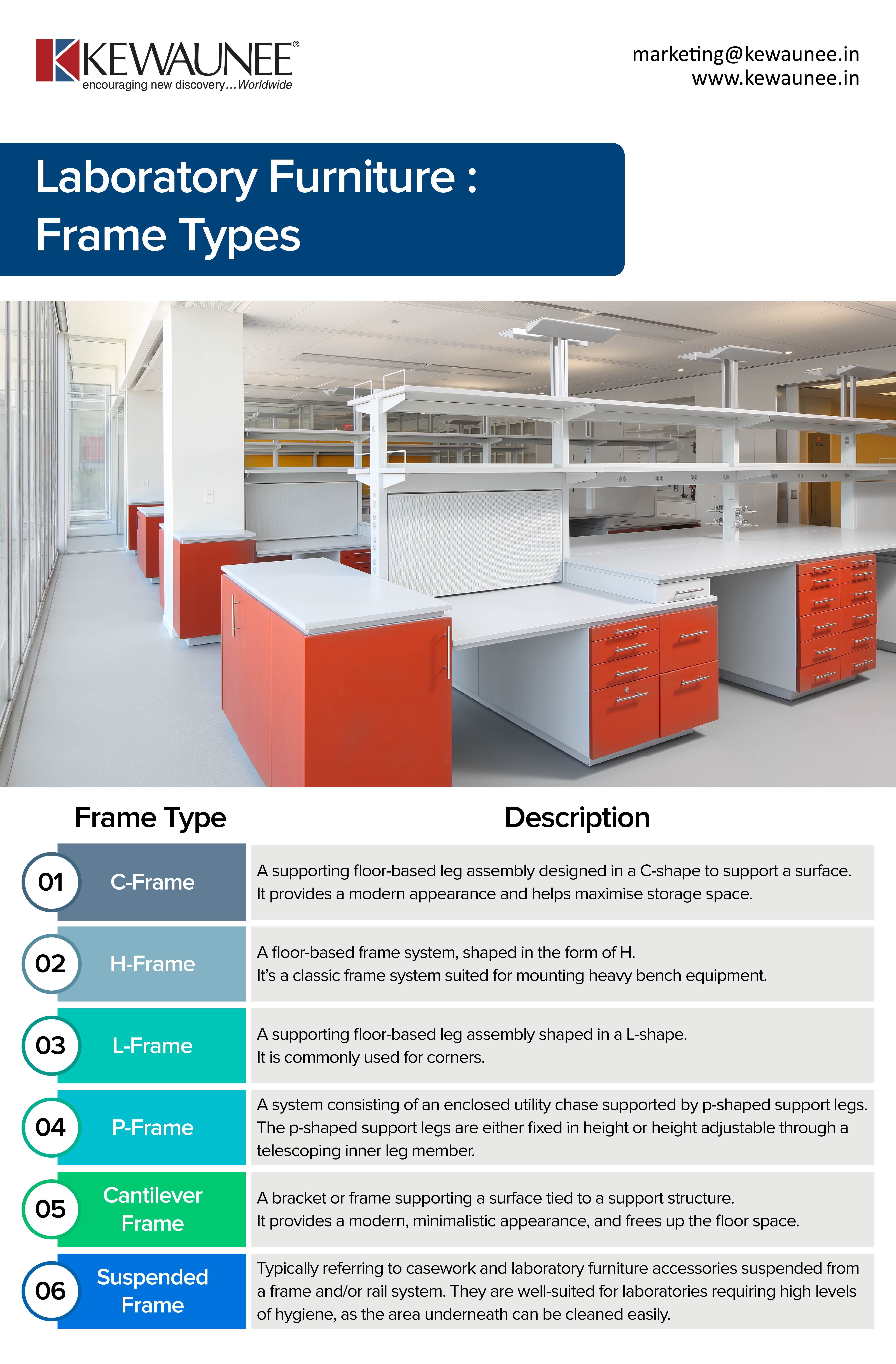Laboratory Furniture: Frame Types
Laboratory design and planning done the right way, could significantly increase the output of the work being done in that specific laboratory. Adaptability and flexibility allow for easy reconfiguration of the lab space.
Lab furniture is one of the critical aspect to consider during planning and design. Lab tables are commonly found in the labs. SEFA defines lab tables as “an article of furniture having a flat, horizontal surface supported by one or more support members (legs), and a frame (apron)”.
An often-confusing aspect is the choice of frame types for the lab tables. Table frame, according to SEFA, is a “support structure supporting a worksurface. A table frame can be a free-standing
unit or cantilevered from a vertical support. Table frames may also support casework and accessory components”.
In this blog, let’s explore the different choices of frames available.
| C-Frame | A supporting floor-based leg assembly designed in a C-shape to support a surface. It provides a modern appearance and helps maximise storage space. |
| H-Frame | A floor-based frame system, shaped in the form of H. It’s a classic frame system suited for mounting heavy bench equipment. |
| L-Frame | A supporting floor-based leg assembly shaped in a L-shape. It is commonly used for corners. |
| P-Frame | A system consisting of an enclosed utility chase supported by p-shaped support legs. The p-shaped support legs are either fixed in height or height adjustable through a telescoping inner leg member. |
| Cantilever Frame | A bracket or frame supporting a surface tied to a support structure. It provides a modern, minimalistic appearance, and frees up the floor space. |
| Suspended Frame | Typically referring to casework and laboratory furniture accessories suspended from a frame and/or rail system. They are well-suited for laboratories requiring high levels of hygiene, as the area underneath can be cleaned easily. |
Comments are closed.











